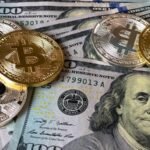How Does Inflation Arise?
There are a variety of factors that can contribute to inflation, which measures the rate at which the price of goods and services rises. It can be brought on by market disruptions like the Covid-19 pandemic or increases in production costs for labor or raw materials. Inflation can also result from increased demand. Additionally, certain fiscal and monetary policies, such as lowering interest rates or lowering taxes, may act as drivers.
Inflation is monitored by developed economy central banks, such as the Federal Reserve in the United States. Inflation can cause prices for essentials to become out of reach if it occurs too quickly. Additionally, inflation reduces consumer purchasing power, devalues currency, and can even hinder savings. We’ll look at the fundamental causes of inflation, the various types of inflation, and who benefits from it in this article.
How Does Inflation Work?
The rate at which the cost of goods and services rises over time is known as inflation. It can affect nearly any product or service, including needs-based costs like utilities, housing, food, medical care, and cosmetics. It can also affect wants-based costs like cars, jewelry, and cosmetics. Consumers and businesses alike become increasingly concerned about the prospect of further inflation once an economy experiences widespread inflation.
The depreciation of money is another term for inflation. Because it reduces the future value of money saved, it can be cause for concern. Both the value of investments and purchasing power are reduced by inflation. For instance, if an investor’s stock and bond investments yielded 5% income and inflation was 3%, the investor would only receive 2% in real terms.
Inflation can be caused by a number of things, including
Built-in inflation The housing market Expansionary monetary and fiscal policy Monetary devaluation Cost-Push Inflation Demand-Pull Inflation
When production costs like wages and raw materials rise, this is called cost-push inflation. While the supply of goods decreases as a result of rising production costs, the demand for goods remains unchanged. As a result, consumers pay more for the finished goods as a result of the increased production costs.
Since commodities like oil and metals are important production inputs, rising prices could be a sign of cost-push inflation. Companies that use copper in the production of their goods, for instance, might see their prices rise in response to an increase in the price of copper. The company will pass on the higher costs of raw materials to customers if the demand for the product is independent of the demand for copper. Consumers pay more for the products they buy as a result, but there is no change in demand for those products.
Wages are typically the single largest expense for businesses and also have an impact on the cost of production. When the economy is doing well and unemployment is low, there may be a shortage of workers or labor. In response, businesses raise wages to attract qualified candidates, raising production costs for the business. Cost-plus inflation occurs when a company raises prices in response to an increase in employee wages.
Price increases can also be caused by natural disasters. For instance, because corn is used in a variety of products, if a hurricane damages a crop like corn, prices could rise across the economy.
Inflation by Demand and Pull.
Strong consumer demand for a good or service can trigger demand-pull inflation. Prices typically rise when there is a rise in demand for a wide range of goods across an economy. Short-term imbalances in supply and demand rarely cause this, but sustained demand can have an impact on the economy and raise prices for other goods; Demand-pull inflation results.
When wages are rising and unemployment is low, consumer confidence tends to be high, resulting in increased spending. The level of consumer spending in an economy is directly influenced by economic expansion, which can result in high demand for goods and services.
The quantity of a given good or service that is available decreases when there is an increase in demand for it. According to the economic principle of supply and demand, consumers are willing to pay more for a product when there are fewer options. The outcome is greater costs because of interest pull expansion.
Inflation is also caused by businesses, especially those that produce well-known goods. Simply because customers are willing to pay more, a business can raise prices. When the product being sold is something that customers require on a daily basis, like oil and gas, corporations can also freely raise prices. However, corporations have the power to increase prices thanks to consumer demand.
Wages are rising and inflation is built in.
When a sufficient number of people anticipate that inflation will continue in the future, this is known as built-in inflation. People may assume that the cost of goods and services will continue to rise at the same rate in the future. Workers may begin to demand higher wages as a result of these shared expectations in order to anticipate rising prices and maintain their standard of living. Businesses would incur higher costs as a result of higher wages, which they might then pass on to their customers. Consumers’ disposable income rises as a result of higher wages, driving up demand for goods and potentially driving up prices even further. As one factor feeds into the other and vice versa, a wage-price spiral can then be established.
The Real Estate Market.
For instance, there have been ups and downs in the housing market over time. Home prices will rise if the economy is expanding and there is a high demand for housing. Products and services that support the housing industry are also affected by demand. There may be an increase in demand for lumber, steel, and other construction materials, as well as for the nails and rivets used in homes.
Fiscal and monetary policy expansion.
Governments’ expansionary fiscal policy has the potential to raise consumers’ and businesses’ discretionary income. Businesses may utilize tax cuts for capital improvements, employee compensation, or new hires. Customers may also make additional purchases. The government could also increase spending on infrastructure projects to boost the economy. Price increases may ensue as a result of an increase in demand for goods and services.
In the same way that loose monetary policy can cause inflation, expansionary fiscal policy can also do so. Interest rates can be lowered by central banks’ expansionary monetary policy. Banks are able to lend more money to businesses and consumers when the cost of lending is reduced by central banks like the Federal Reserve. There is an increase in spending and demand for goods and services as a result of the availability of more money across the economy.
Financial Devaluation.
Monetarists believe that too many dollars chasing too few goods is the root cause of inflation. To put it another way, the amount of money available is now too much. This theory asserts that, like the value of any other good on the market, the law of supply and demand governs the value of money. The value decreases when there is more supply. This quantity theory of money (QTM) can be summarized in the equation of exchange, which states that the money supply equals the nominal expenditures in the economy when the rate at which money is spent annually (the velocity of money) is multiplied by the money supply. MV = PQ. Given a constant quantity of goods in the economy, P (prices) can therefore increase as the money supply or money velocity increases.
A general lack of confidence or trust in the money’s issuer can also cause it to lose value. As the money is regarded as having no value at all, hyperinflation may even set it.
at produced










